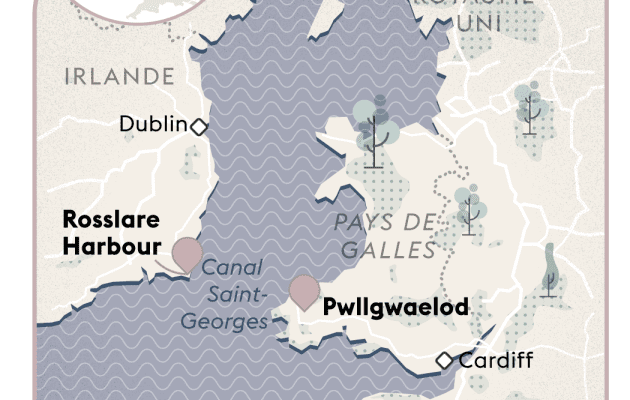On both banks of the St. George’s Canal, in Wales and in Ireland, the similarity of the landscapes is disturbing. This Celtic fraternity passes through paths where there are no less than twenty remarkable lighthouses, dozens of medieval castles and almost 200 beaches of all sizes. Wandering in seven stages, like a tiny glimpse of a journey between nature and history.
In front of the sea
Pembroke County (Pembrokeshire in English, Sir Benfro in Welsh) occupies the western tip of Wales, more than 150 kilometers from the capital, Cardiff. Nowhere are the Carboniferous limestone cliffs wilder than in the south of the county, specifically around Pembroke. Difficult to find, it is the car park of the Saint-Govan chapel which serves as the starting point for the most extraordinary of walks facing the sea.
The chapel dates from the 13the century (some buildings even date back to the 6the century) and has the particularity of completely blocking the very steep path that descends between two cliffs towards the shore. The place is prodigious: you have to enter the very small building to come out on the other side, facing the elements. No beach here, but blocks of stone whitened with foam and promontories where colonies of birds live. After going back up, walking an hour west on the Pembrokeshire Coast Path – the Welsh version of our customs officer’s path – we discover the splendid Green Bridge of Wallesa low arch battered by giant waves.
golden trail
The Pentre Ifan megalith, 20 km from the Fishguard ferry pier, strikes first with its apparent lightness. How could this 16-ton cover slab survive the centuries supported by three vertical stones more than two meters above the ground? Built 3,500 BC, this burial chamber is not the only dolmen in the beautiful Preseli Hills, west of Pembrokeshire. In this paradise for walkers, standing stones and standing stones from the Neolithic period spring up from the bogs like mushrooms. We now know that the megalithic blue stones of Stonehenge, in England, yet 270 km away, were taken from the site of the Waun Mawn menhirs, near Pentre Ifan.
Among the many hiking routes, this is the Golden Trail (the Goden Road) which deserves the detour among all. These 12 kilometers from west to east, starting from the site of Foel Ery, follow a route that prehistoric men already took to come and go from England or Ireland. Between Bronze Age funerary cairns, ancient fortifications, flocks of sheep and heather, the walk is enchanting.
You have 62.85% of this article left to read. The following is for subscribers only.
